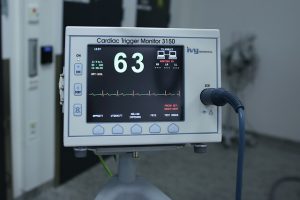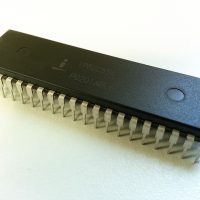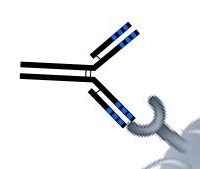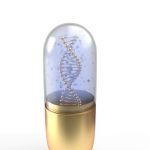Japan Patent Office publishes the Examination Guidelines for Patent and Utility Model.
The parts about use application (i.e., "for use in...") are as follows.
Examination Guidelines for Patent and Utility Model in Japan
Part III Chapter 2 Section 4 Claims Including Specific Expressions
...(omitted)
3. Expression Specifying the Product by its Use Application (Limitation of Use)
3.1 Specifying claimed invention
If there is an expression specifying the product by use application such as "for use in ..." (the limitation of use application) in a claim, the examiner should take into consideration the description and drawings as well as the common general knowledge at the time of filing in interpreting what the limitation of use means as a claimed element.
3.1.1 Basic ideas in cases where there is limitation of use application
If the product with limitation of use means the product specifically suitable for its use, the examiner recognizes that the product has a shape, structure or composition, etc. (hereinafter simply referred to as "structure, etc." in 3.) that the limitation of use means (See Examples 1 and 2). The case where “the product with limitation of use means the product specifically suitable for the use application” is the case where the meaning of the limitation of use application is interpreted as the structure, etc. specifically suitable for the use application in consideration of the description and drawings as well as the common general knowledge at the time of filing.
On the other hand, if the product with limitation of use application does not mean the product specifically suitable for the use application, except for the use application of 3.1.2, the examiner should not interpret the limitation of use application to specify the product.
Example 1: Crane hook with a shape of ...
(Explanation)
In some cases, the meaning of the expression “crane” is interpreted as "hook" having a structure specifically suitable for use in crane from the aspect of its size or intensity or the like. In these cases, the examiner recognizes the claimed invention as the "hook" with such a structure. Accordingly, "a crane hook with a shape of ..." is different in structure, etc. from "a fishing hook (fishhook)" with a similar shape.
Example 2: Fe based alloy for a piano string of composition A
(Explanation)
In some cases, the meaning of the expression “for a piano string” is interpreted as a fine-layered structure for giving high-tension specifically suitable for a piano string. In these cases, the examiner recognizes the claimed invention as "Fe based alloy" with such a structure. Accordingly, "Fe based alloy for a piano string of composition A" is different in structures, etc. from Fe based alloy which does not have such a structure (for example, "Fe based alloy for use in gear wheel of composition A").
3.1.2 Cases where an invention of a product with limitation of use application should be interpreted as a use invention
A use invention is defined as the invention based on (i) discovering an unknown attribute of a product and (ii) finding out that the product is suitable for a novel use application because of such an attribute. The following ideas on the use invention are generally applied to the technical fields (Example: a technical field for use of a composition including chemical substances) where it is relatively difficult to know how to use the product based on the structure or name of the product.
(1) Cases where claimed invention is considered to be a use invention
In these cases, the examiner recognizes that the limitation of use application has a role in specifying the claimed invention, and specifies the claimed invention in consideration of the limitation of use application.
Example 1: Composition for use in anti-fouling ship bottoms comprising a specific quaternary ammonium salt.
(Explanation)
This composition and "the composition for use in undercoating for electrodeposition comprising certain quaternary ammonium salt" is not different except for their limitation of use. However, the use application such as "use in undercoating for electrodeposition" is, in some cases, derived from an attribute that enables electrodeposition on materials and that improves adherence of overcoat layers. In these cases, the examiner specifies the claimed invention, in consideration of the limitation of use application such as "use in anti-fouling ship bottoms" where both of the following conditions (i) and (ii) are satisfied. (Accordingly, these inventions are different from each other.) That is because this limitation of use application has a role in specifying the "composition."
(i) "The use in anti-fouling ship bottoms" is derived from discovery of an unknown attribute that prevents shells from sticking to ship bottoms.
(ii) The use application which is derived from the attribute is different from any known uses and novel.
Example 2:
[Claim 1] A food composition for use in preventing a hangover containing an ingredient A as an active ingredient.
[Claim 2] A food composition for use in preventing a hangover according to claim 1, wherein the food composition is a fermented milk product.
[Claim 3] A food composition for use in preventing a hangover according to claim 2, wherein the fermented milk product is yogurt.
(Explanation)
The claimed invention "A food composition for use in preventing a hangover containing
an ingredient A as an active ingredient" and the cited invention "a food composition containing an ingredient A" are not different except a limitation of use application. In this case, the examiner specifies the claimed invention in consideration of the limitation of use application such as "for use in preventing a hangover" provided that both of the following conditions (i) and (ii) are satisfied. (Accordingly, these inventions are different from each other.) That is because this limitation of use application has a role in specifying "a food composition. "
(i) "The use in preventing a hangover" is derived from discovering of an unknown attribute that promotes alcohol metabolism by an ingredient A.
(ii) The use application which is derived from the attribute is different from any known uses and novel.
The same way of specifying the claimed invention also applies to a fermented milk product and yogurt which are more specific concept of a food composition.
(2) Cases where claimed invention is not considered to be use invention though there is a limitation of use application in a claim
Where the claimed invention is not considered to provide a novel use as the use of the product in consideration of the common general knowledge in the field at the time of filing, the invention does not fall under the category of use invention even if an unknown attribute was discovered. The examiner specifies the claimed invention with the understanding that the limitation of use does not have a role in specifying the claimed invention. The same applies to the case where the use of the claimed invention and prior art are not distinguishable from each other in consideration of the common general knowledge in the field at the time of filing even if they are different in their wordings.
Example 3: Cosmetic product containing ingredient A as an active ingredient for use in preventing wrinkle.
(Explanation)
"Cosmetic product containing ingredient A as an active ingredient for use in moisture retention of the skin" are derived from an attribute that adjusts the skin by softening the stratum corneum and helping the skin to absorb water. On the other hand, "cosmetic product containing ingredient A as an active ingredient for wrinkle defense" are derived from an unknown attribute that improves the skin condition by promoting the production of substance X in the body. However, both products are used externally for skin as skin-care cosmetics. In addition, if it is common knowledge in the field that the cosmetics with a moisturizing effect improve skin condition by preventing skin wrinkles, etc. with moisture retention and are also used for prevention of skin wrinkles, the use of these two products cannot be distinguished. Therefore, the examiner specifies the claimed invention with the understanding that the limitation of use, the expression "for use in preventing wrinkle," does not have a role in specifying the claimed invention.
(3) Points to note
A claim of use invention can be expressed in the form of drug (example: "cancer treatment drug containing ... as an active ingredient") and the form of method of use as well as the form of limitation of use application What is described in the above items (1) and (2) is also applicable to use invention expressed in these forms other than limitation of use application only if there is an expression meaning a use application in the claim. (For example, "catalyst comprising ...," "ornamental material composed of alloy ...," "method of killing insects using ....")
3.1.3 Cases where ideas described in 3.1.1 or 3.1.2 are not applied or generally not applied
(1) Compounds, Microorganisms Animals or Plants
The ideas described in 3.1.1 and 3.1.2 are not applied to a compound with the limitation of use such as an expression "for use in ..." (compound Z for use in Y). The examiner interprets such a compound as the compound itself without limitation of use application (compound Z) (Example). That is because such a limitation of use only indicates the utility of compounds in general. The same also applies to microorganisms, animals and plants.
Example: Compound Z for use in killing insects.
(Explanation)
The examiner interprets "compound Z for use in killing insects" as "compound Z" itself without limitation of use because the expression "for use in killing insects" only indicates the utility of the compounds in consideration of the statements of the description and drawings as well as the common general knowledge at the time of filing. However, the examiner does not interpret "insecticide comprising compound Z as a main ingredient" in the same way as described above.
(2) Machines, apparatuses, articles and instruments, etc.
The ideas on use invention described in 3.1.2 are generally not applied to machines, apparatuses, articles and instruments, etc., because the product and its use are inseparably connected with each other in general.
3.2 Determination of novelty
3.2.1 Cases where the product of the invention stated in a claim has limitation of use application and the limitation means the product specifically suitable for its use application
In these cases, where there are differences in structure, etc. that the limitation of use means, the examiner determines that the claimed invention is different from the cited prior art even if all the claimed elements correspond to all the elements of the cited prior art except for the limitation of use. Therefore, the examiner determines that the claimed invention involves novelty.
Example 1: Crane hook with a shape of ... (same as Example 1 of 3.1.1)
(Explanation)
Where the statement of a claim is interpreted to specify the "hook" having structure specifically suitable for use in crane from the aspect of its size or intensity or the like, the claimed invention involves novelty even if "a fishing hook (fishhook)" with a similar shape is publicly known.
3.2.2 Cases where the product of the invention stated in a claim has limitation of use
application, but the use application does not mean the product specifically suitable for its use and the claimed invention does not fall under the use invention of 3.1.2
In these cases, where all the claimed elements correspond to all the elements of the cited prior art except for the limitation of use, the examiner does not determine that the claimed invention is different from the cited prior art. Therefore, the examiner determines that the claimed invention lacks novelty.
3.2.3 Cases where the claimed invention falls under the use invention of 3.1.2
In these cases, even if the product itself of the claimed invention is publicly known, the claimed invention involves novelty over the product (Note).
(Note) The use invention which involves novelty does not involve an inventive step where it is considered that a person skilled in the art would have easily arrived at such use application based on known attributes or structures of the product.










